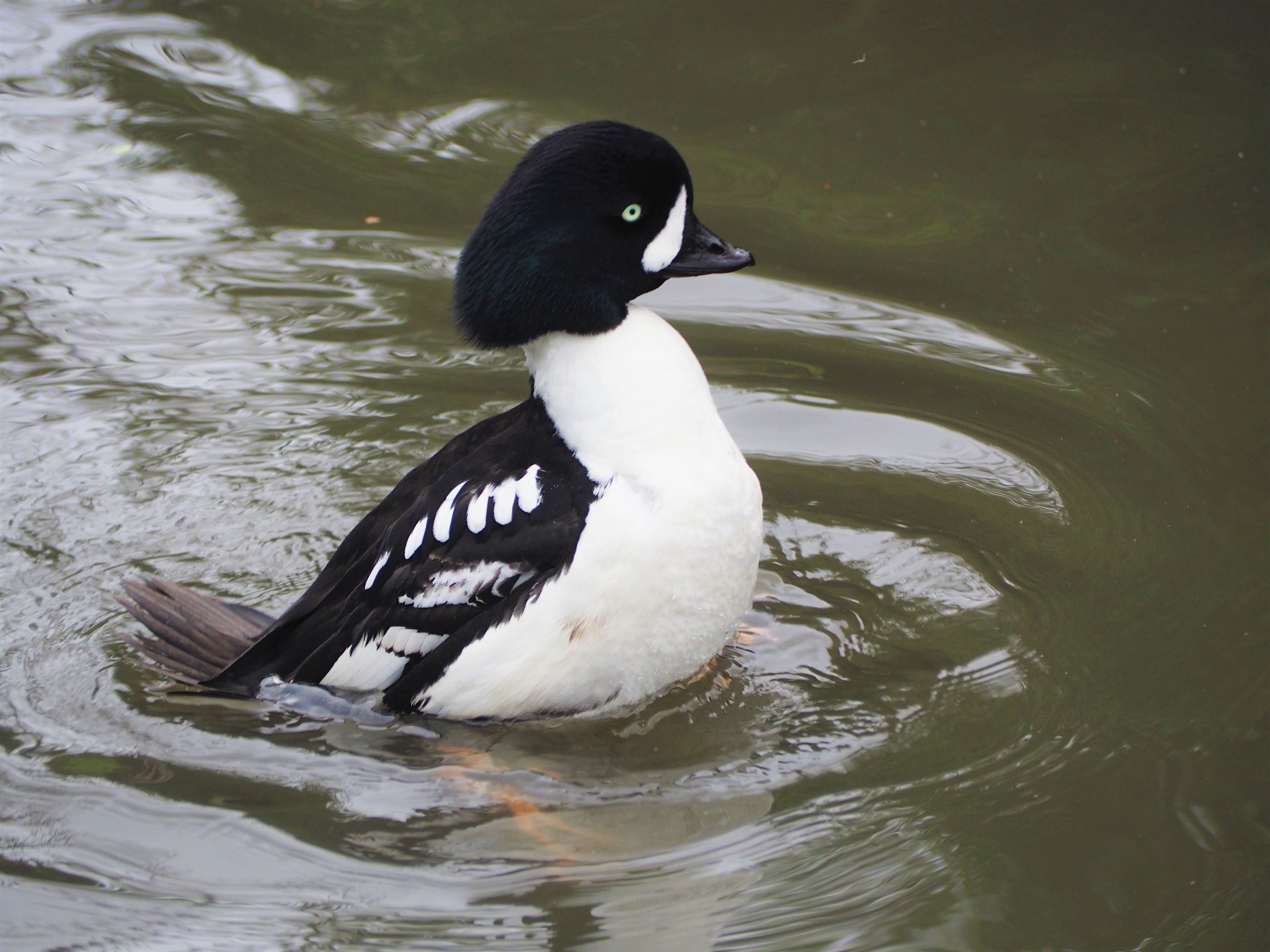Goldeneye (duck) on:
[Wikipedia]
[Google]
[Amazon]
''Bucephala'' is a genus of diving ducks found in the Northern Hemisphere.
 Known
Known
Common Goldeneye
at Birdzilla {{DEFAULTSORT:Goldeneye (Duck) Taxa named by Spencer Fullerton Baird
Taxonomy
The genus ''Bucephala'' was introduced in 1858 by American naturalistSpencer Baird
Spencer Fullerton Baird (; February 3, 1823 – August 19, 1887) was an American naturalist, ornithologist, ichthyologist, herpetologist, and museum curator. Baird was the first curator to be named at the Smithsonian Institution. He eventually ...
with the bufflehead as the type species
In zoological nomenclature, a type species (''species typica'') is the species name with which the name of a genus or subgenus is considered to be permanently taxonomically associated, i.e., the species that contains the biological type specimen ...
. The genus name is derived from Ancient Greek
Ancient Greek includes the forms of the Greek language used in ancient Greece and the ancient world from around 1500 BC to 300 BC. It is often roughly divided into the following periods: Mycenaean Greek (), Dark Ages (), the Archaic peri ...
''boukephalos'', meaning "bullheaded", from ''bous'' "bull", and ''kephale'', "head", a reference to the crest of the bufflehead making its head look large.
The bufflehead was formerly treated as the only member of the genus (sometimes unnecessarily changed to ''Charitonetta'') while the goldeneyes were incorrectly placed in ''Clangula
The long-tailed duck (''Clangula hyemalis''), formerly known as oldsquaw, is a medium-sized sea duck that breeds in the tundra and taiga regions of the arctic and winters along the northern coastlines of the Atlantic and Pacific Oceans. It is th ...
'' (as ''Clangula americana''), the genus of the long-tailed duck
The long-tailed duck (''Clangula hyemalis''), formerly known as oldsquaw, is a medium-sized sea duck that breeds in the tundra and taiga regions of the arctic and winters along the northern coastlines of the Atlantic and Pacific Oceans. It is th ...
, which at that time was placed in ''Harelda
The long-tailed duck (''Clangula hyemalis''), formerly known as oldsquaw, is a medium-sized sea duck that breeds in the tundra and taiga regions of the arctic and winters along the northern coastlines of the Atlantic and Pacific Oceans. It is th ...
''.Report of the National conference on utilization of forest products. New national museum, Washington, DC, November 19 and 20, 1924. Issue 13. US Govt. print. off. 1925. It may yet be correct to recognise two genera, as the bufflehead and the two goldeneyes are well diverged. In this case, ''Bucephala'' would be restricted to ''B. albeola'' and the name ''Glaucionetta'' (Stejneger, 1885) resurrected for the goldeneyes.
Species
The three living species are: Known
Known fossil
A fossil (from Classical Latin , ) is any preserved remains, impression, or trace of any once-living thing from a past geological age. Examples include bones, shells, exoskeletons, stone imprints of animals or microbes, objects preserved ...
taxa
In biology, a taxon (back-formation from ''taxonomy''; plural taxa) is a group of one or more populations of an organism or organisms seen by taxonomists to form a unit. Although neither is required, a taxon is usually known by a particular nam ...
are:
* ''Bucephala cereti'' (Sajóvölgyi Middle Miocene of Mátraszõlõs, Hungary - Late Pliocene of Chilhac, France)
* ''Bucephala ossivalis'' (Late Miocene/Early Pliocene of Bone Valley, United States), which was very similar to the common goldeneye and may even have been a paleosubspecies
A chronospecies is a species derived from a sequential development pattern that involves continual and uniform changes from an extinct ancestral form on an evolutionary scale. The sequence of alterations eventually produces a population that is p ...
or direct ancestor
* ''Bucephala fossilis'' (Late Pliocene of California, United States)
* ''Bucephala angustipes'' (Early Pleistocene of central Europe)
* ''Bucephala'' sp. (Early Pleistocene of Dursunlu, Turkey: Louchart et al. 1998)
References
*Louchart, Antoine; Mourer-Chauviré, Cécile; Guleç, Erksin; Howell, Francis Clark & White, Tim D. (1998). ''L'avifaune de Dursunlu, Turquie, Pléistocène inférieur: climat, environnement et biogéographie. C. R. Acad. Sci. Paris IIA'' 327(5):341-346.rench with English abridged version
The Rench is a right-hand tributary of the Rhine in the Ortenau ( Central Baden, Germany). It rises on the southern edge of the Northern Black Forest at Kniebis near Bad Griesbach im Schwarzwald. The source farthest from the mouth is that of the ...
(HTML abstract)
External links
Common Goldeneye
at Birdzilla {{DEFAULTSORT:Goldeneye (Duck) Taxa named by Spencer Fullerton Baird